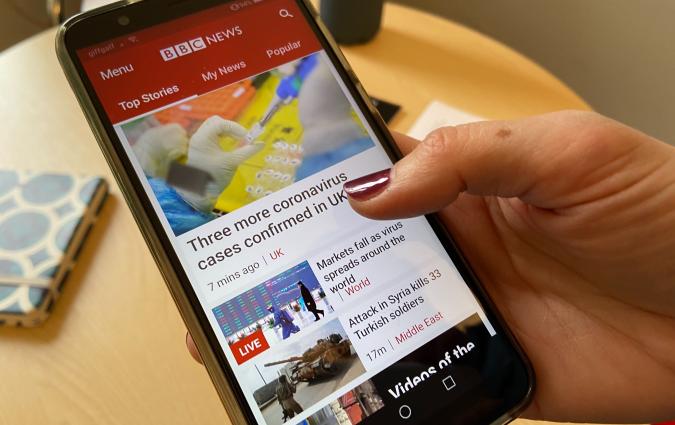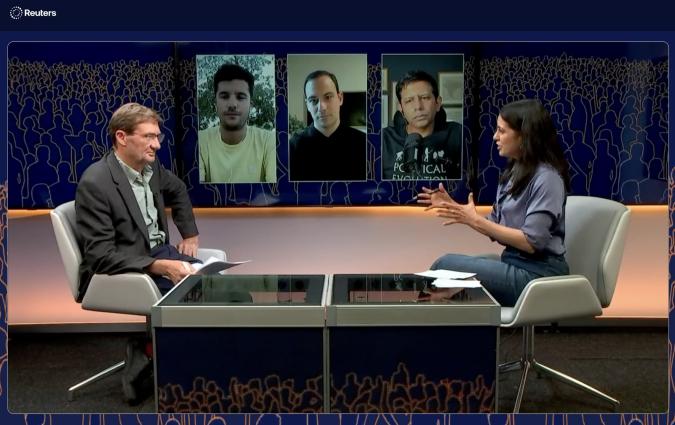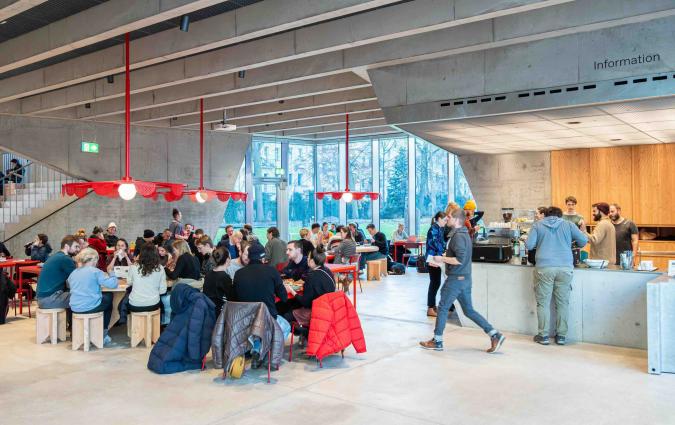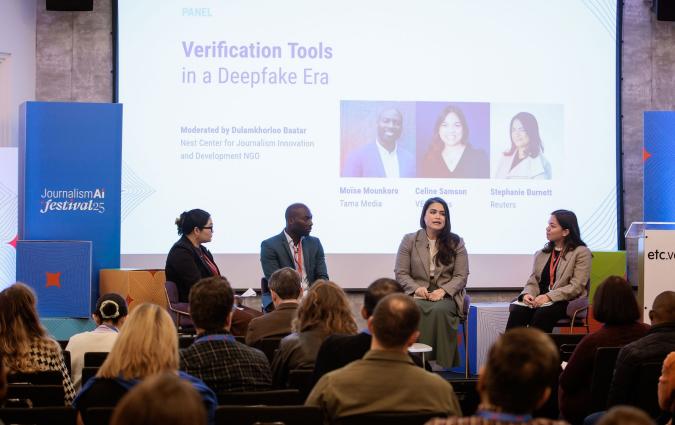“The remedy to falsehoods and deception is journalism”: Takeaways from the Sheldonian Series on Truth
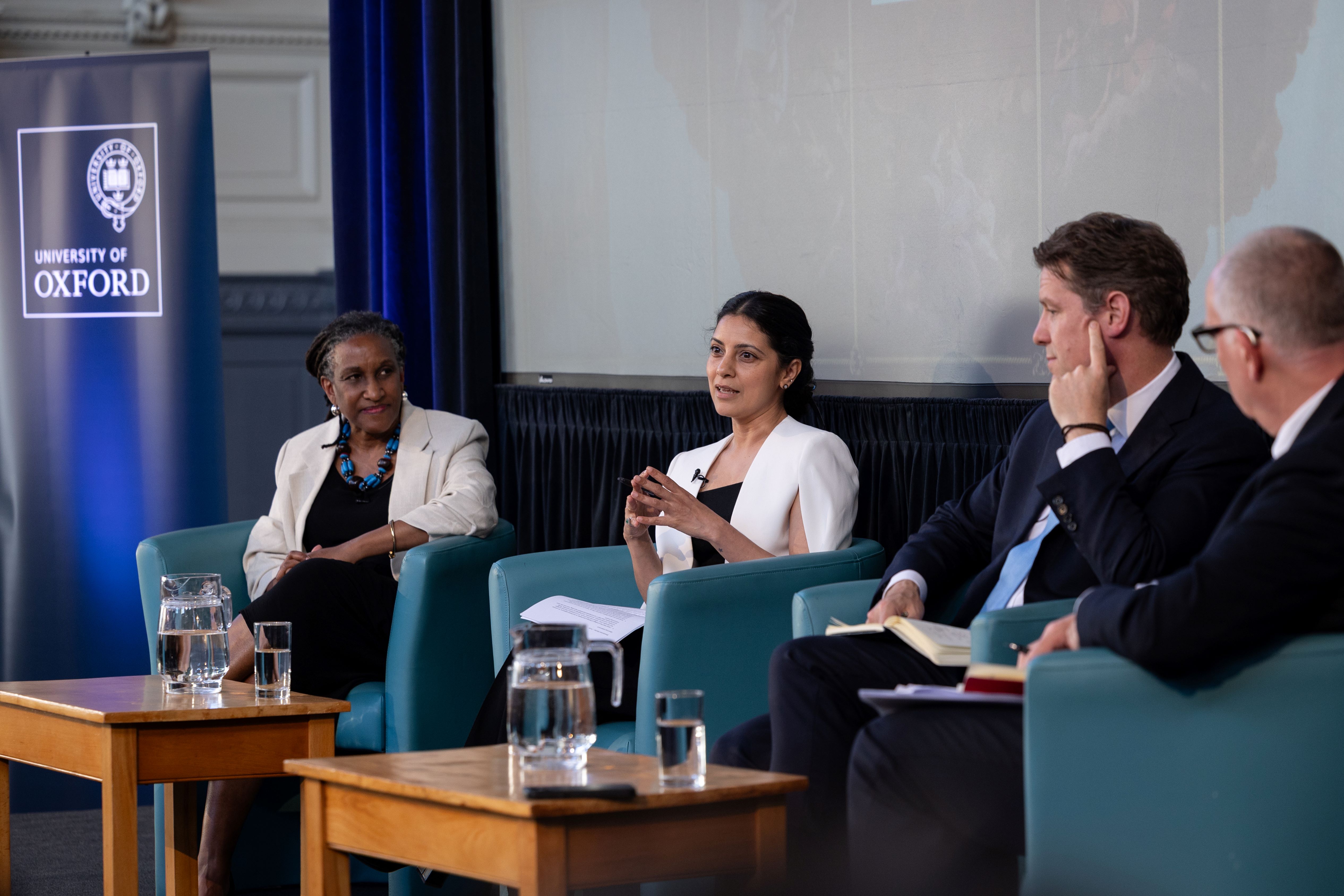
From left to right: Kimberly Johnson, Mitali Mukherjee, Fraser Nelson, and Richard Ovenden. | Cyrus Mower Photography/University of Oxford
What is the role of truth in our society?
The director of the Reuters Institute, Mitali Mukherjee, discussed this theme at a recent event featuring Fraser Nelson, journalist at The Times of London, and Kimberley Johnson, Professor of Social and Cultural Analysis at New York University and John Gilbert Winant Visiting Professor of American Government at the University of Oxford.
The event, part of the University of Oxford’s termly lecture Sheldonian Series, was moderated by Richard Ovenden, head of the university’s Bodleian Library.
The Sheldonian Series, named after the historic university theatre in which the talks are held, aims to promote the discussion of topical issues. In this last panel, issues discussed ranged from the role of truth in contemporary life and the people who create it, the relationship between truth, news organisations and universities, and the impact of the Trump administration.
Here are three key takeaways from the discussion. The full discussion can be found here.
1. There is a systematic erosion of faith in journalism. Our research has documented the continued breakdown in trust between audiences and mainstream news organisations, as well as a growing disengagement with the news. The speakers acknowledged that we are living in a society where people are less trusting of institutions, including journalism. For a lot of people, their relationship with journalism reflects their search for truth through information that they feel they can trust, Mukherjee said. However, as people become less and less trusting of journalism, that relationship erodes.
“The breakdown of how we perceive truth is not a function of a one-day event. It is the systematic erosion of faith in institutions, political institutions, economic institutions, legal institutions and journalism, if we are to see it as a public good, is an extension of that as well,” said Mukherjee.
Nelson mentioned how the rise of the digital environment, especially social media platforms where many now get their news, has created a landscape where "truth is not a prized commodity". Unlike newspapers, which are regulated and face pressure from subscribers to be accurate, the digital world is driven by clicks and engagement. This lack of checks and balances online can make it harder for people to discern truth and may erode trust in information sources generally, including news.
“We have a landscape where the truth and lies lie side by side, and it's up to us to tell them apart,” said Nelson. “But ultimately, I don't see this as a cause for outrage, nor even for censorship. The remedy to lies is truth. The remedy to falsehoods and deception is journalism.”
2. Public officials can be one of the main adversaries of truth. Trump was a prominent topic amongst the speakers. Moderator Richard Ovenden highlighted how a significant moment in the debate around truth and facts came about when the concept of ‘alternative facts’ was coined by Kellyanne Conway, at the time a counsellor to Donald Trump, who was defending then-White House Press Secretary Sean Spicer's false statement about the attendance numbers at Trump's first inauguration ceremony. A public official promoting a version of reality contrary to verifiable evidence has now become a staple in US politics, but, as Mukherjee pointed out, this is also the case in many other countries where authoritarianism has already taken hold, like India. Mukherjee identified governments and state machinery as primary sources of misinformation. As recently as in the conflict between India and Pakistan, there were two versions of the same story being presented. However, Mukherjee highlighted that this isn’t a new phenomenon.
“I know it feels really existential, but it's not something that the world hasn't lived through before. This cycle of misinformation has been around as long as time has,” she said.
Johnson also drew parallels between historical and contemporary examples of governments actively obscuring or making data disappear. American historian and sociologist W.E.B. Du Bois found that archives of southern state governments had information missing, destroyed, or tucked away when he sought to research Reconstruction history, the period of American history post-Civil War. Now, data sets have gone missing from certain US government websites, described by Johnson not as accidental but as a decision to pursue a particular political agenda rather than the pursuit of science or knowledge.
“The disappearance of this data and the denigration of scientific knowledge is troubling,” said Johnson. “How much of a discussion can you have about the truth if the data is in fact not even there?”
3. Young audiences are disengaged from the news. Our research shows that many segments of society, particularly young people, women, and people from underprivileged groups, may not engage with or trust the news because they don't see themselves or their needs reflected in it. Young people are increasingly not getting their news from traditional sources like newspapers. Data has shown that the rate at which young audiences visit news websites fell off a cliff between 2015 and 2024, with less than half doing so by 2024, primarily accessing news via social media. Nelson pointed out that he has noted that newspapers don't even make the top 10 news sources in text format for many people today, with social media platforms being greater sources of news. He mentioned speaking to a group of teenagers about the news, and not a single one had ever read a newspaper.
“[Teenagers] tend to get their news from influencers or from some other 15-year-old giving his opinion on what's happening in Gaza,” said Nelson. “It's very difficult for a journalist to compete being as sort of snappy as just somebody like giving their opinion in a seemingly cool way.”
Mukherjee said the way to combat the disengagement of young people is through news organisations meeting them where they are, on the platforms they use, such as Facebook, X, Instagram, TikTok, and YouTube. This requires innovating storytelling across different media like podcasts and videos, which Mukherjee noted are ways of engaging with young audiences, rather than shutting social platforms out altogether.
“Our own research points to the fact that people generally see value in social media platforms. They understand the risks associated with it. They understand there's misinformation, but on balance, they find that, because it connects them to friends and family and other interesting things, they'd like it to be around,” said Mukherjee.
In every email we send you'll find original reporting, evidence-based insights, online seminars and readings curated from 100s of sources - all in 5 minutes.
- Twice a week
- More than 20,000 people receive it
- Unsubscribe any time
signup block
In every email we send you'll find original reporting, evidence-based insights, online seminars and readings curated from 100s of sources - all in 5 minutes.
- Twice a week
- More than 20,000 people receive it
- Unsubscribe any time


